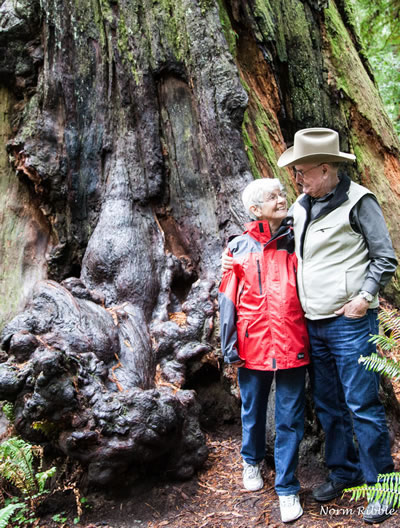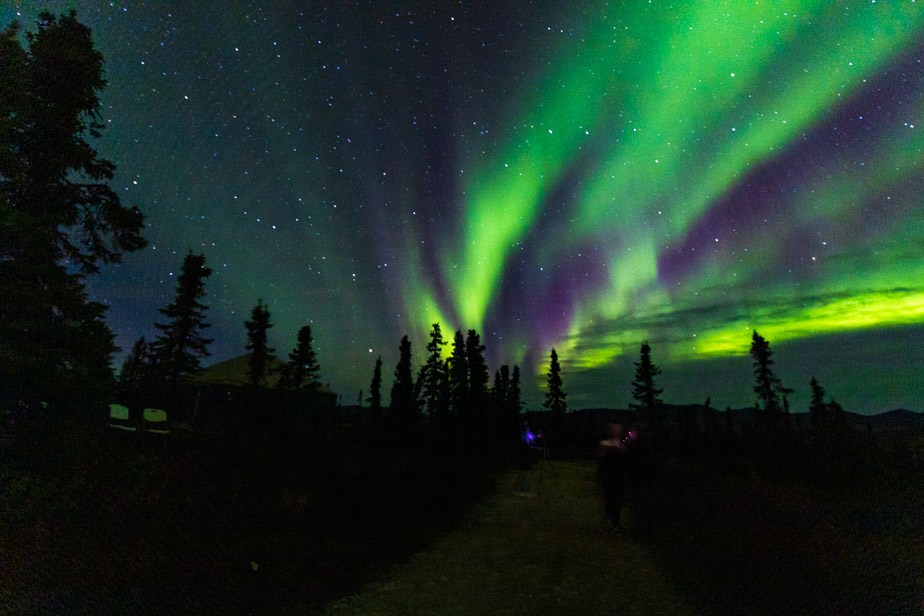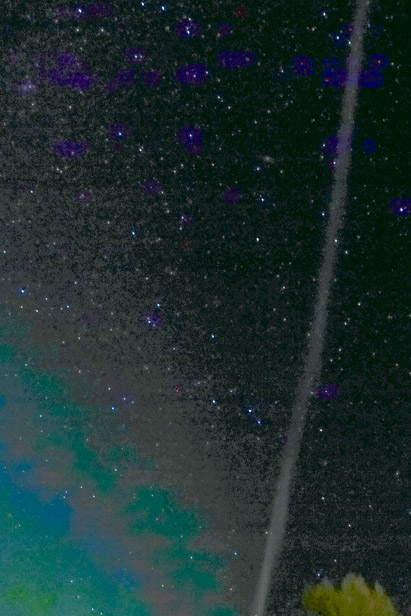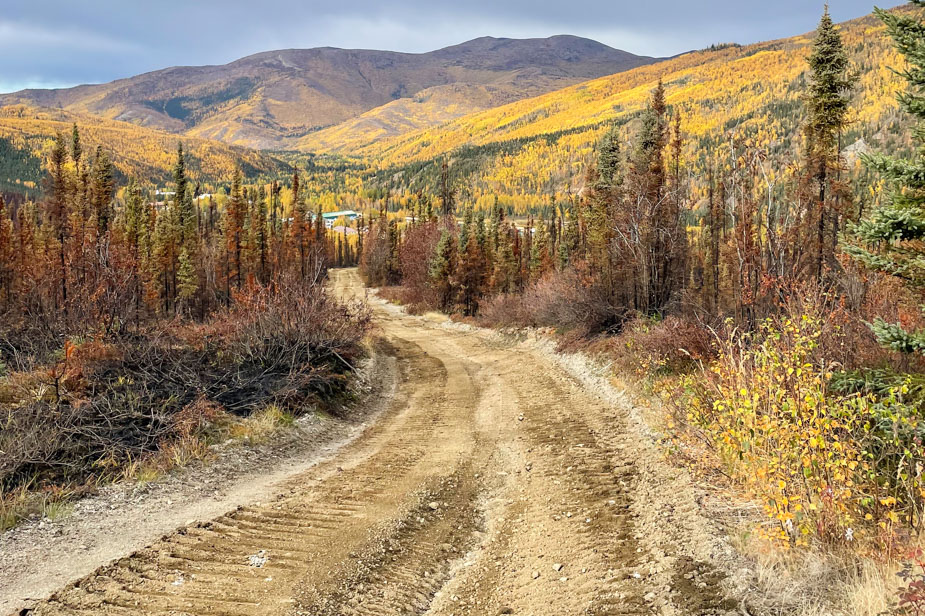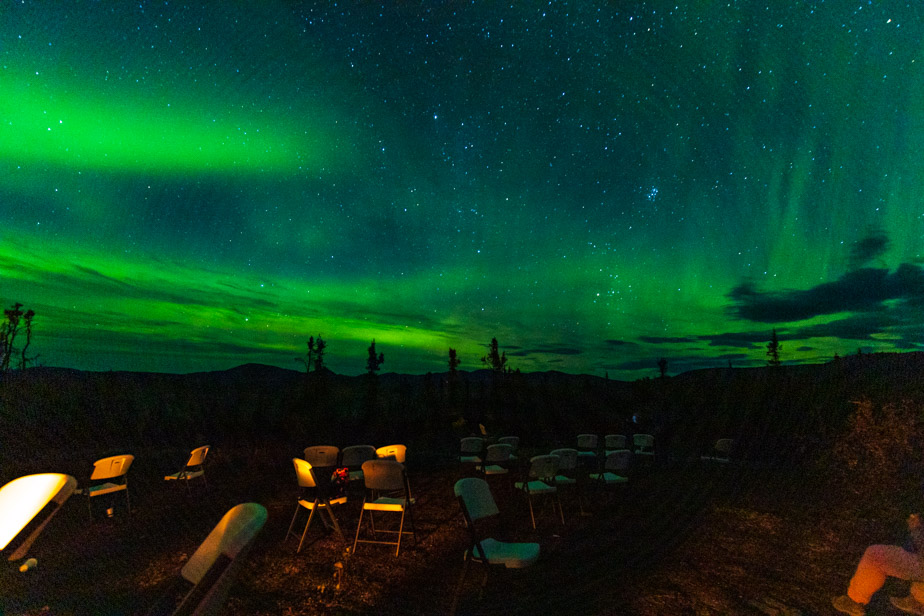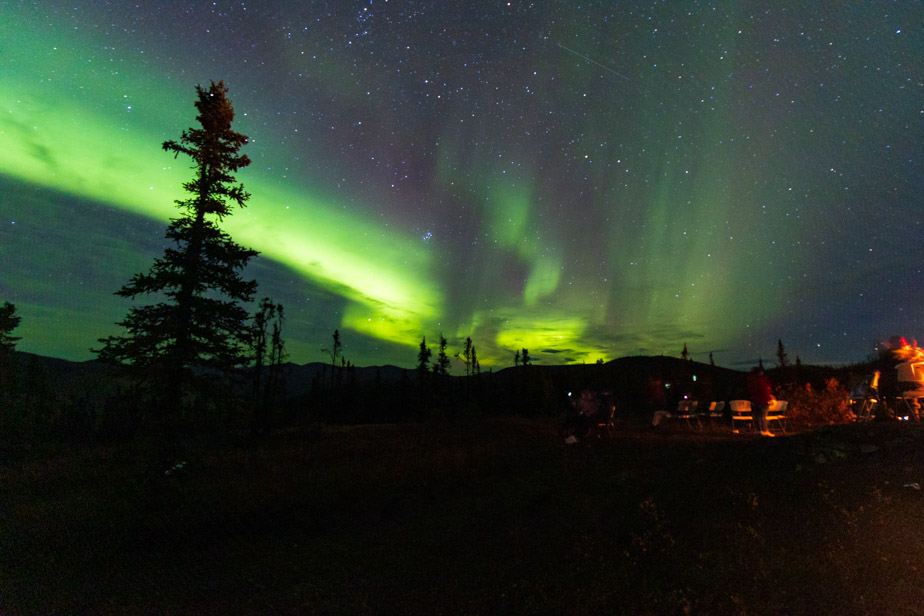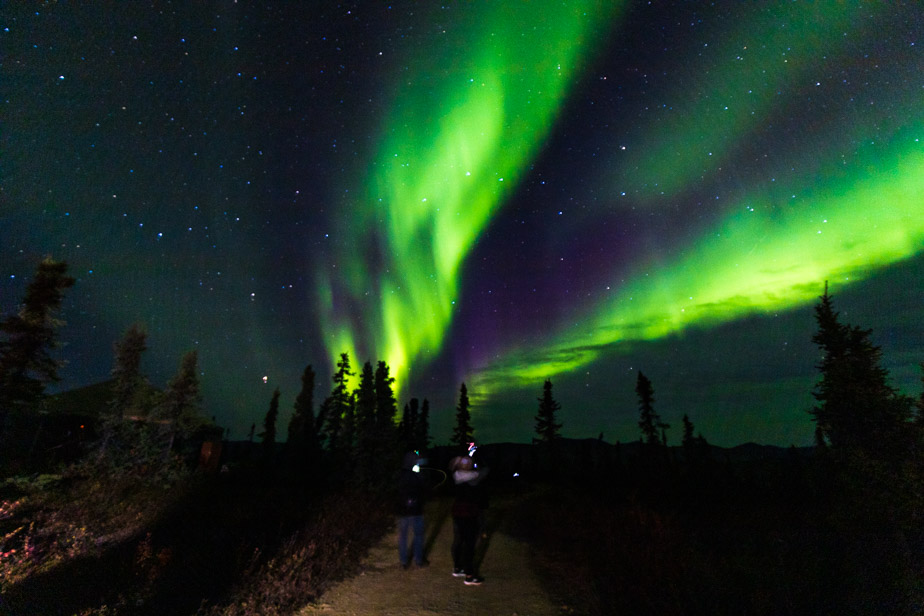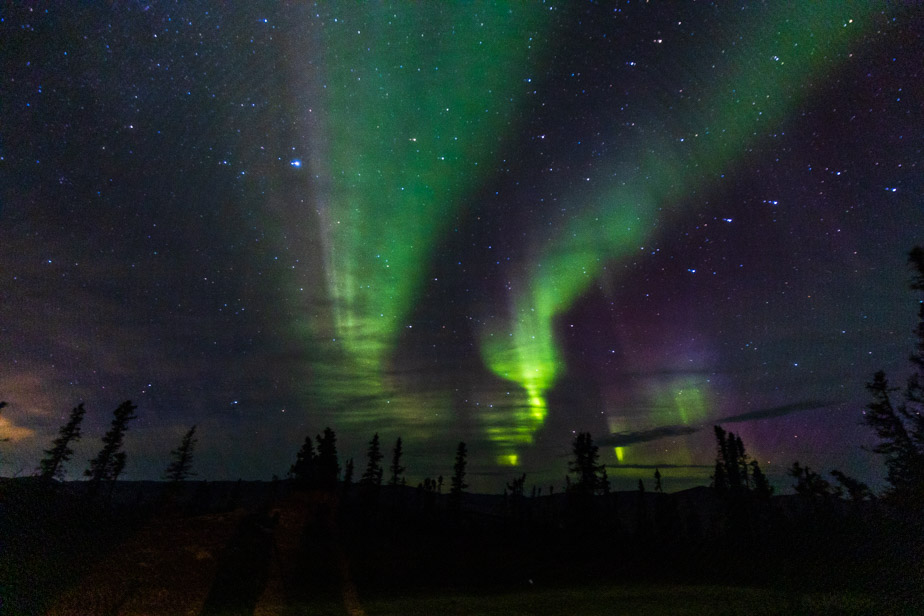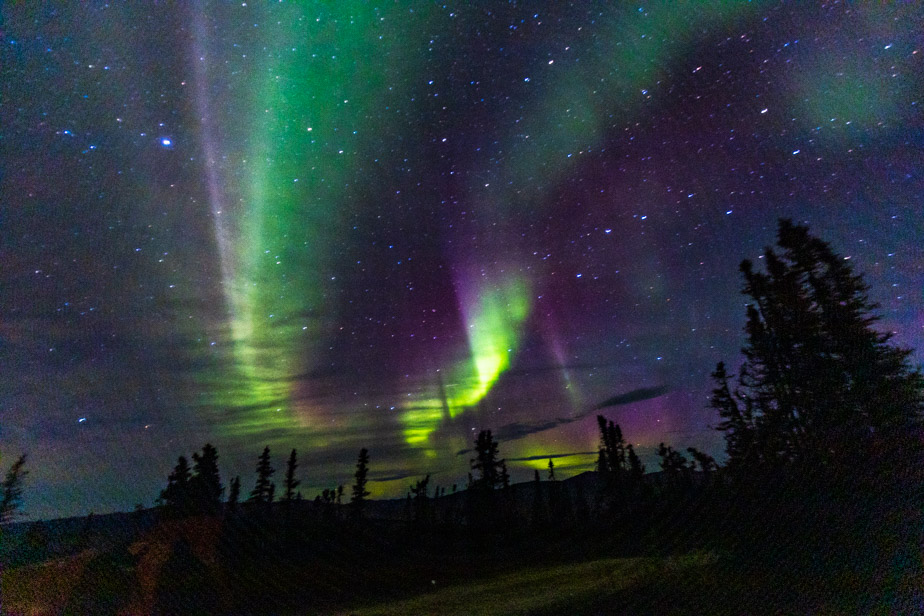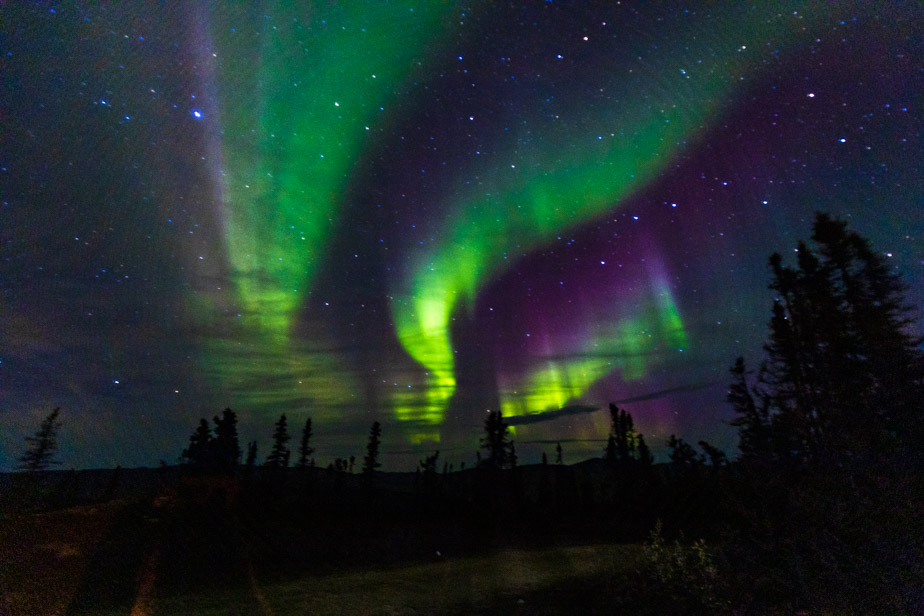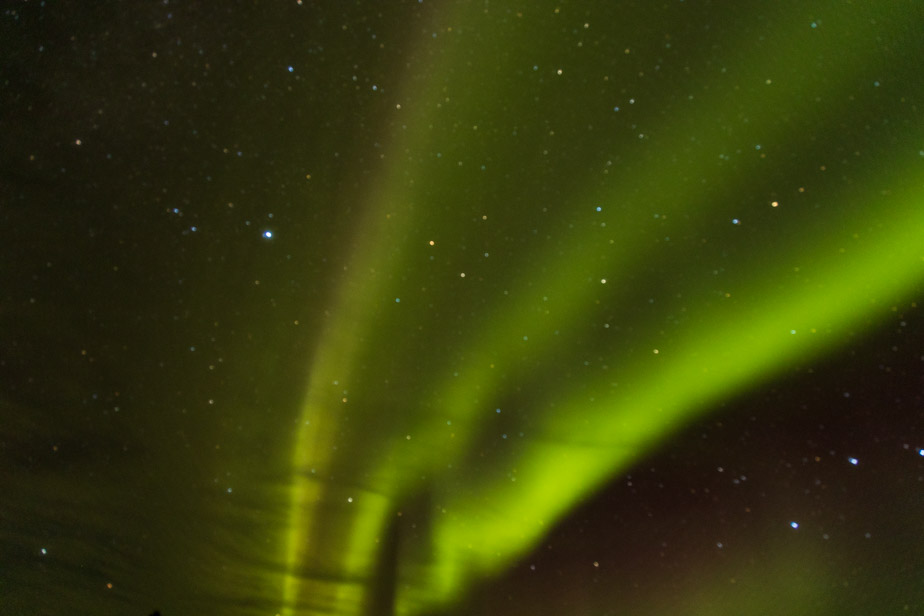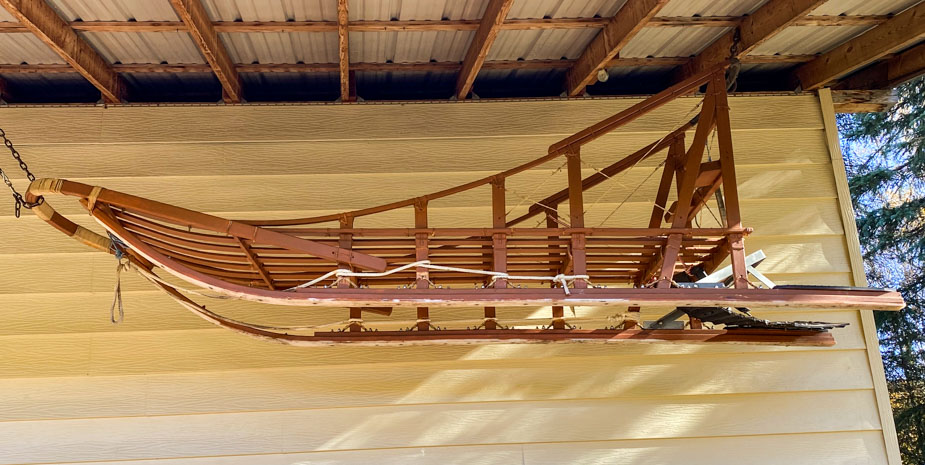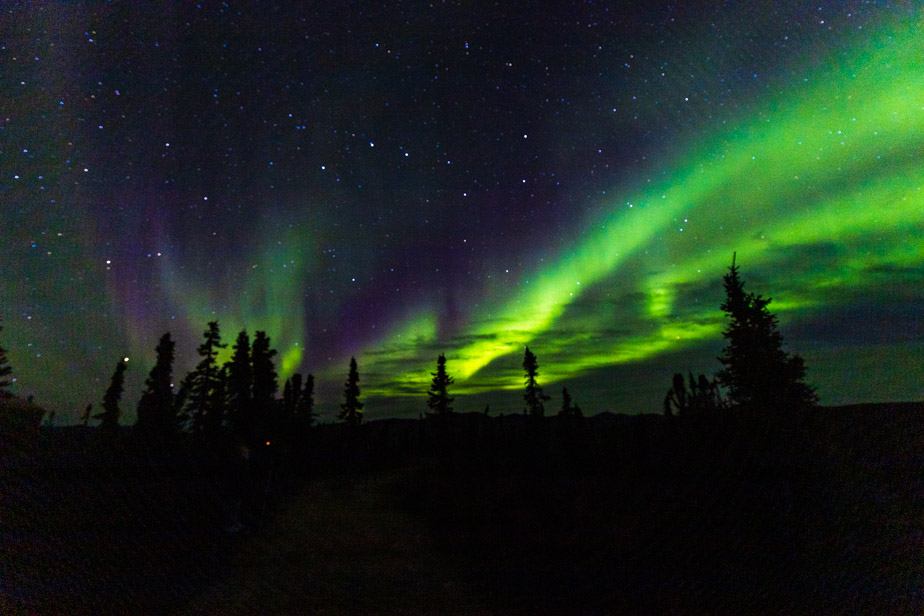The Chena Hot Springs area has it best visibility and the highest 'Kp' index of the Aurora Borealis around the March equinox. Also the temperatures on the mountain top are -20 ~ -30, which is just too darn cold for we desert rats, especially when standing or sitting outside for an hour or more.
Our main reason for this trip and traveling this distance was to view the Auro; so we booked 7 nights at Chena Hot Springs, hoping that we'd get a great view of the Auroras at least one night.
The best two nighs were our first two, our arrival day on Sunday the 12th and followed by Monday the 13th with the 'Kp' index at 3. The balance of the week the index was at 2, so our timing was perfect..
You've seen our Sunday shots, now may we show your our best. These were taken from the top of the mountain
Canon RP 6 seconds, f.4, ISO 1600, lens 16mm
The Aurora on the left and God's stars in the heavens and the Milky Way on the right. Inspirational.
Aurora (plural: auroras or aurora), also known as polar lights, aurora Polaris, northern lights, aurora Borealis, southern lights, aurora Australis, is a natural light display in Earth's sky is predominantly seen in the high latitude regions around the Arctic and Antarctic. Auroras display dynamic patterns of brilliant lights that appear as curtains, rays, spirals or dynamic flickers covering the entire sky.
Auroras are the result of disturbances in the magnetosphere caused by solar winds. These disturbances alter the trajectories of charges porticoes in the magneto spheric plasma. These particles, mainly electrons and protons, precipitate into the upper atmosphere. The institutionalization and excitation of atmospheric constituents emit light of varying color and complexity. The form of the aurora, occurring within bands around both polar regions, is also dependent on the amount of acceleration imparted to the precipitating particles.
Auroras change with time. Over the night, they begin with glows and progress towards coronas, although they may not reach them. They tend to fade in the opposite order.
Quoted from Wikipedia.
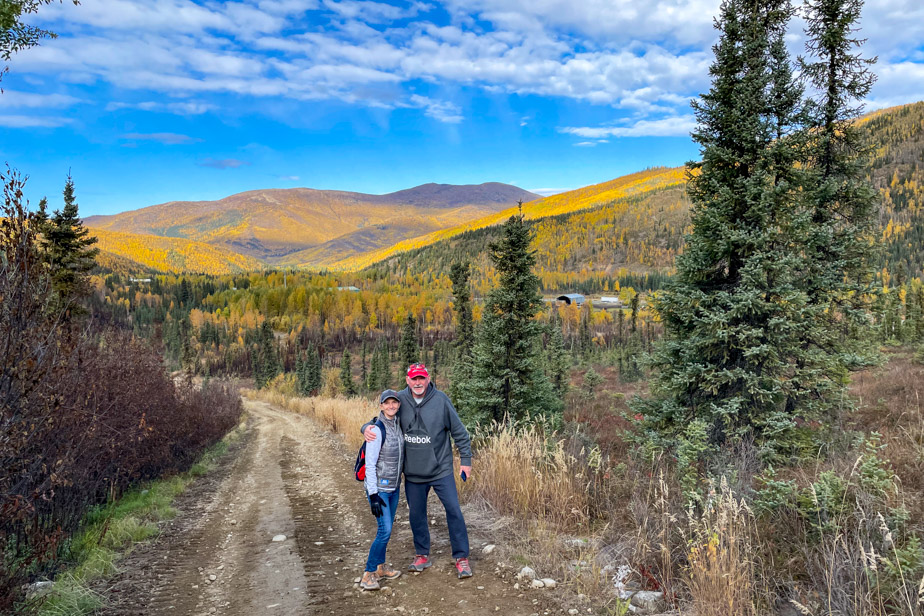
The day following our night on the mountain the Kids climbed the 2 1/2 mile tract up to the dome and the Yurt, where we had traveled the previous night in the Snow Coach.
iPhone photo
This slop is a lot steeper and rougher than these photos show. You'll notice the track marks from the snow coach. It was a rough and bumpy 30 minute ride up ad back in the dark on a cold night.
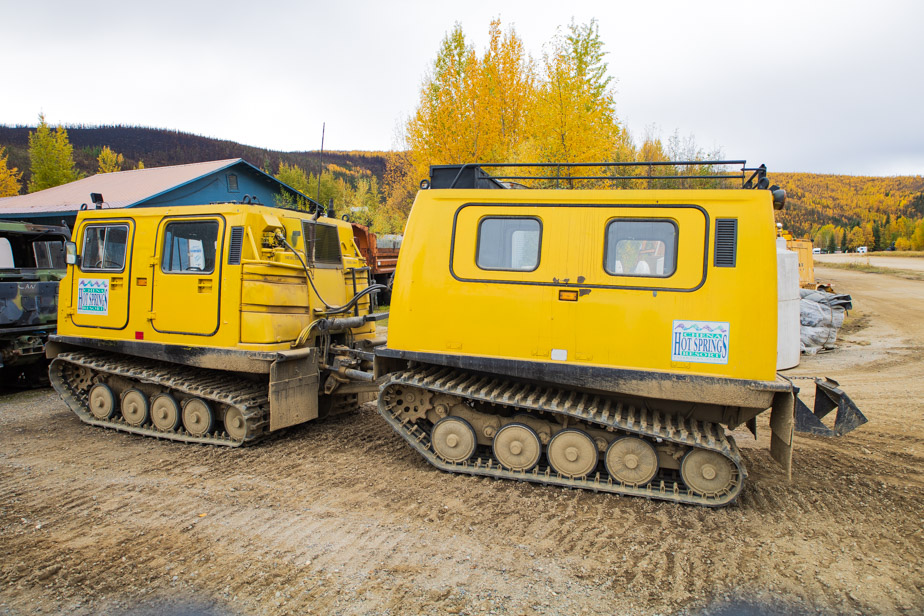
This was our Snow Coach Chariot built in Sweden and used by the US Army for rough terrain and snow transportation. Both the pulling tractor and the transportation buggie are powered, so they'll go anywhere. After our ride up and down the mountain, we certainly had a greater respect for our Troops being hauled around in these buggies.
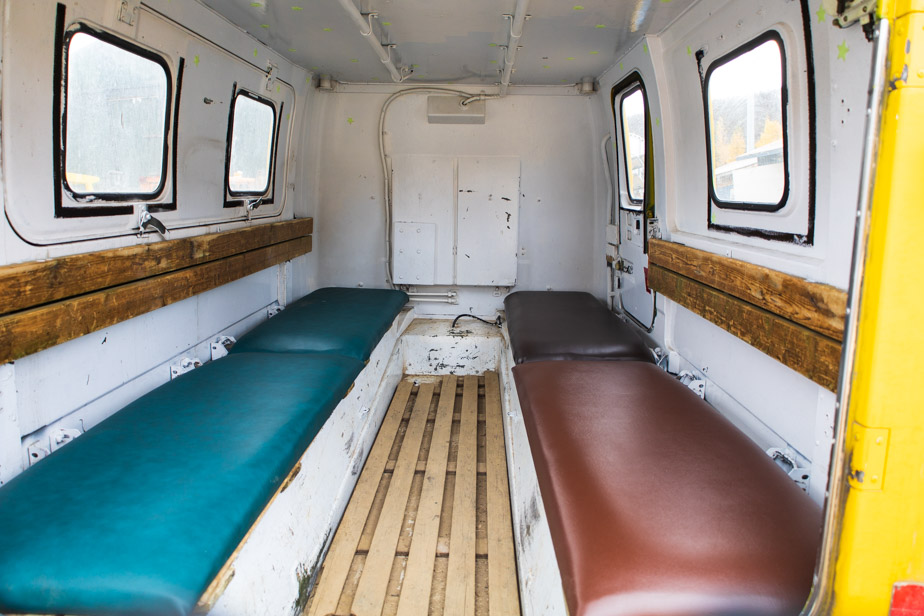
Climb in and cozy up, and we'll be off up the mountain. The tours were 5 hours in length and that included the hour in transit. On Monday the 13th our tour left the Activity Center at 10:30pm and, we returned at 3:30am. But, Oh! The fabulous memories of the Auroras implanted in our minds, and also a bucket or two of great photographs.
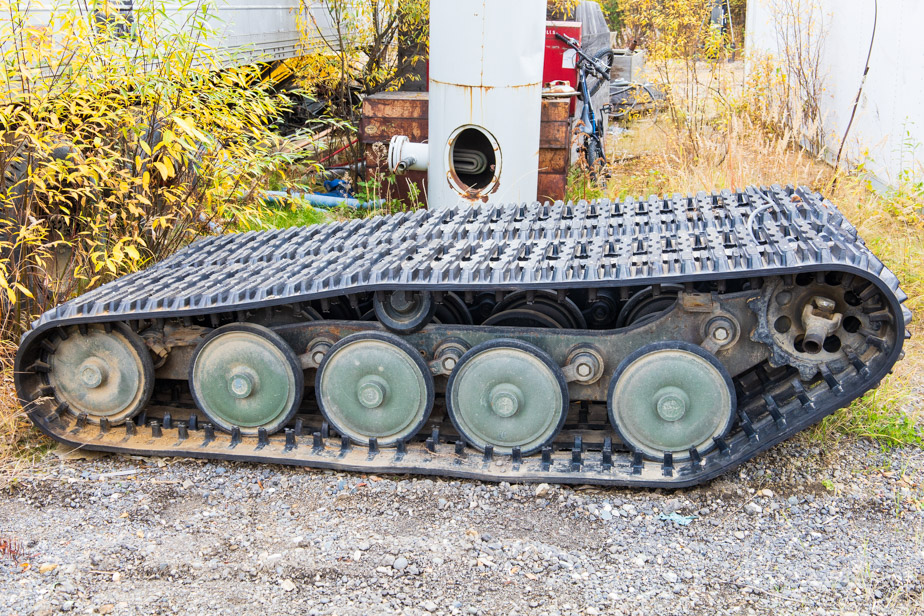
Two new tracks wait their call to be in service. I noticed the cleats on the pads of our snow buggies were showing wear, but then remembered that shortly this trail will all be covered with snow..
Shot from the Dome of the Mountain
Do yourself a favor and download the photographs .....where available..... The skies, the Borealis and the stars just jump out so brilliantly; and you'll be amazed. I'll admit when photographing, we were not looking at the stars but at the Borealis. But when processing, to our amazement the brilliance of the stars set the whole scene in balance.
The Glory of the Gods Heavens!
photo shot 30 seconds, f.4, ISO 1600, lens 24mm
This shot was taken about midnight, and the light from the right is from a large fire pit. This fire pit was really great, when one needed to warm the hands or the back side.

Miss Dottie found a good spot near the fire and spend a few relaxing hours just absorbing its spender. I'm not sure which she enjoyed more the Aurora or the fire???? But, she is a traveling trooper, ready and with bags packed.
Not a bad view from the fire, and all one has to do is turn and enjpy the splinder of God's Heaven, and while warming the backside.
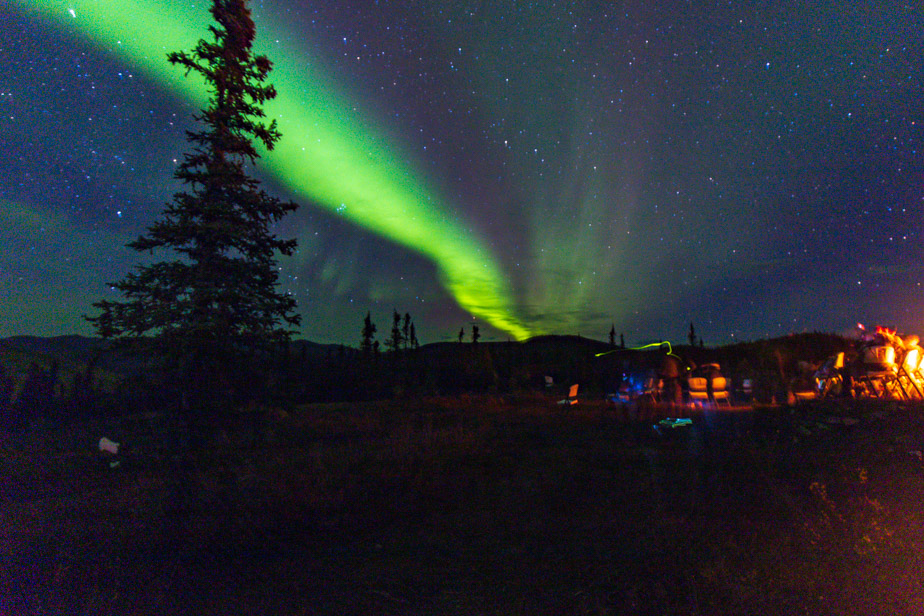
Canon PR 20 seconds, f.4, ISO 3200, lens 16mm
The aurora was what we came to see, but the stars gave the scene it's purpose and ambiance. If you'll compare this photograph to the first one, you'll see the ever changing Aurora. The time separation between these two shots was 3 1/2 minutes.
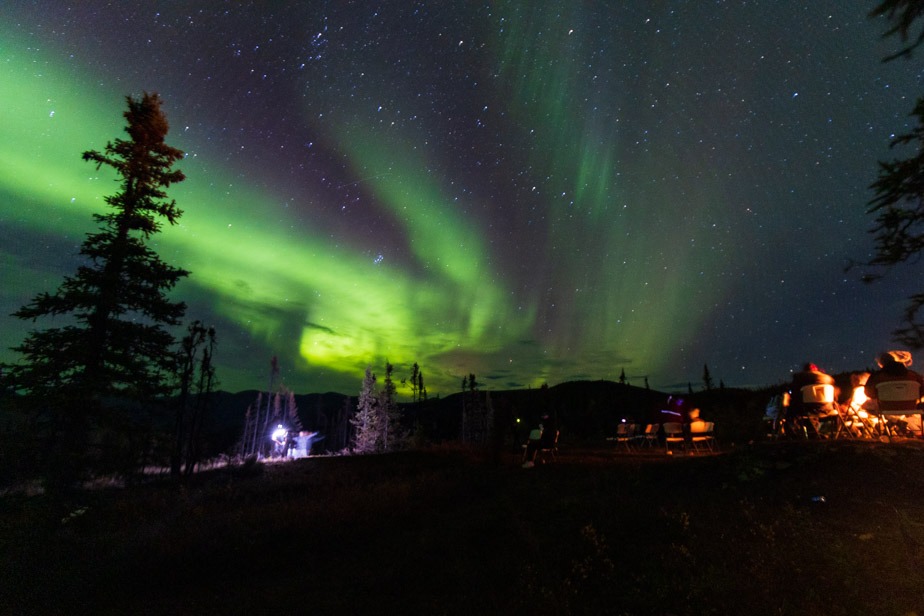 Download same camera and settings
Download same camera and settings
This time lasp is only 2 minutes between this photo and the one above. It was pretty much pitch dark, so a flashlight was a necessity. Too, the terrain was also mountain rocky. The two people pictured on the left in the light are taking a photo of themselves with the Auroras as a background.
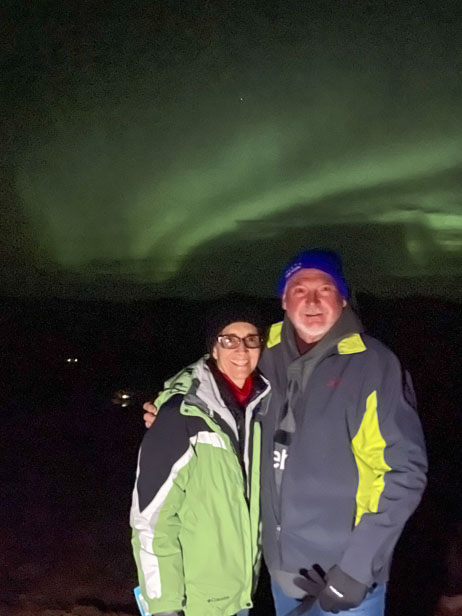
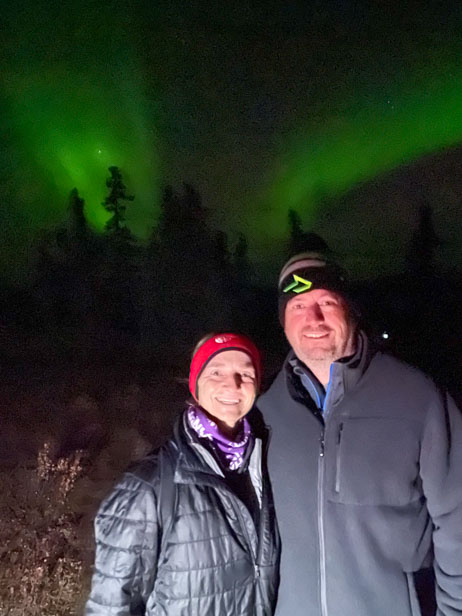
The Kids used the technique of lighting themselves and keeping the Auroras as background. Pretty Neat. Being these two photoswere taken with an iPhone there was'nt a time lasp of seconds to grab the fullness of the Borealis.
Canon RP 10 seconds, f.4, ISO 1600, lens 16mm
30 minutes later than the photos where we were discussing the time lag and the ever changing Auroras.
the RP again at10 Seconds f4 ISO 3200
Wow, what 12 minutes makes in this spectacular photo. This grouping of photos were shot between midnight and 2:00am. This is my favorite of the photographs
The Stars at Night are Big and Bright, Deep in the heart of Alaska!
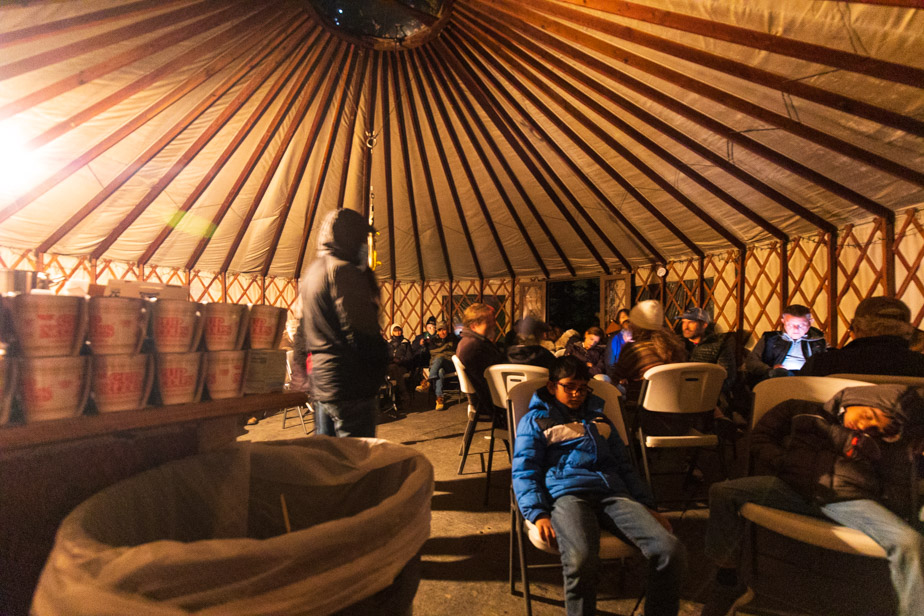
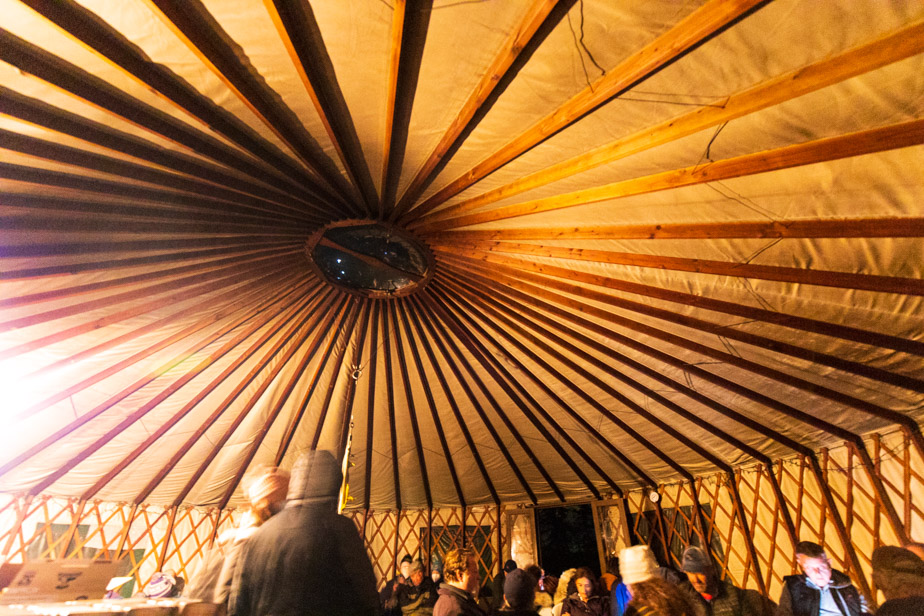
We are inside the Yurt for a steaming cup of hot chocolate and a warm up. This is a rather fascinating structure of some 60 feet in diameter and a ceiling heights of 20 feet +/-. The people standing and sitting were part of the 9:30pm group, and they were ready for their trek back down the mountain.
After warming a little we went outside to see what changes might have occurred with the Aurora's. The interesting part was the photos taken about midnight, the aurora was to the west; and then when these were taken at 2:30, the auroras were in the east. The Aurora Borealis are alive and in constant movement as the stratosphere wind shifts.
Absolutely Amazing.
RP 10 sec f 4 16mm ISO 3200
We are now shooting at about 2:30pm after a cup of chocolate and warming up in the Yurt, and we are shooting to the East, 180 degrees from earlier. You'll notice some low scud has moved in, and it reflects as something being out of focus. Look at the trees and you'll see focus. The low clouds do add to the mystery aa if it were Holloween.
Canon RP 10 seconds, f.4, ISO 3200...
So you see the Bid Dipper front and center, and too the red hue that has come out? Breathtaking.
RP 30 seconds, f.4, ISO 3200, lens 16mm
Again compare this photo to the one above, as there is a 1 minute delay in this one, but it presents a completely different feeling. The only constant things are the trees and the Big Dipper.
Canon R 30 sec f4 ISO 3200 24mm
Just the heavens and the Aurora Borealis
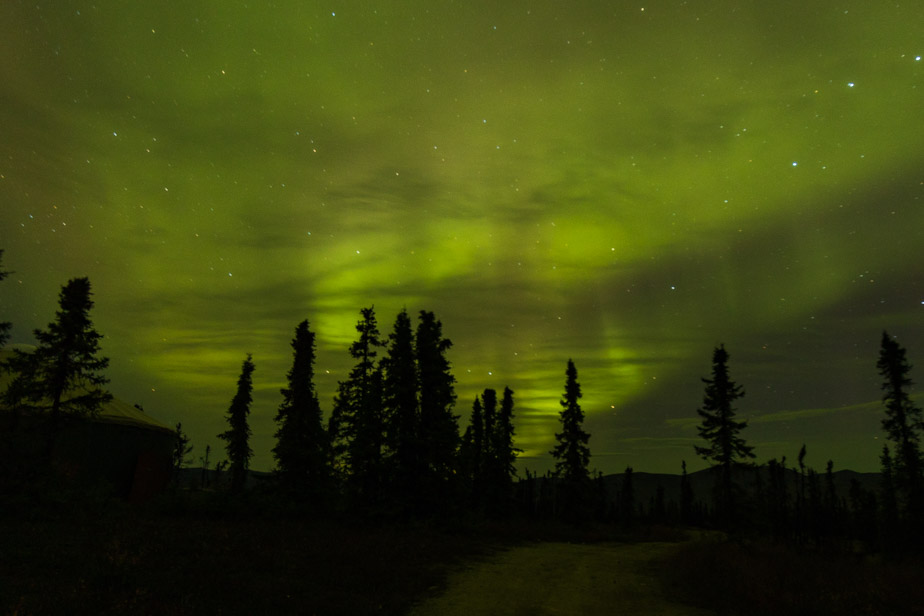
Download \
Canon R 30 sec f4 ISO 3200 24mm
What a night on the mountain. We have seen the Auroras, and our expectations were exceeded. Their beauty and power holds you in humbleness.
Renee really caught it all with this shot we'll call it a night, as it is 3:00am and they are calling us to load our ole tired bodies back in the wagon to head for the house. I'm ready for Miss Dottie to tuck me in.
A look around the Resort and a 100 year collection of mining machine history.
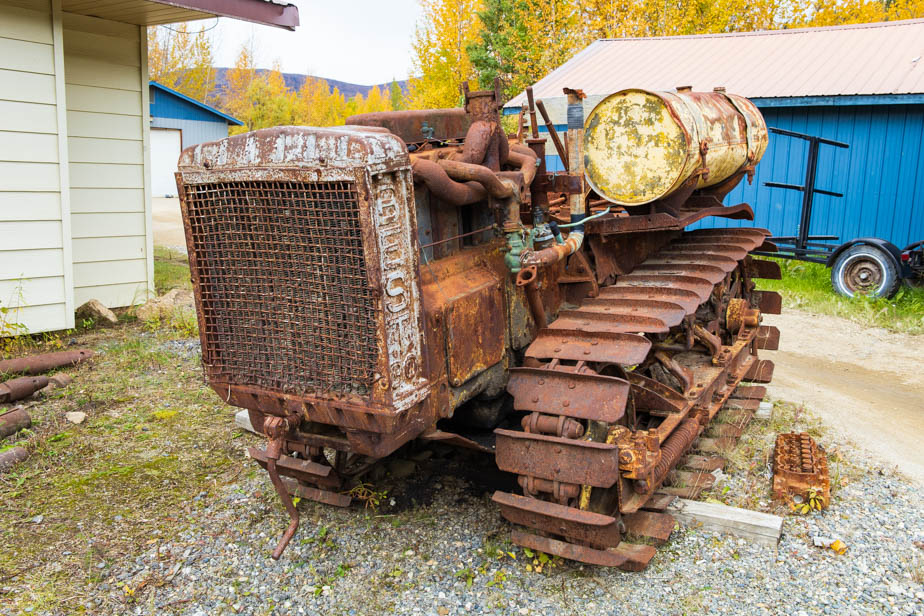

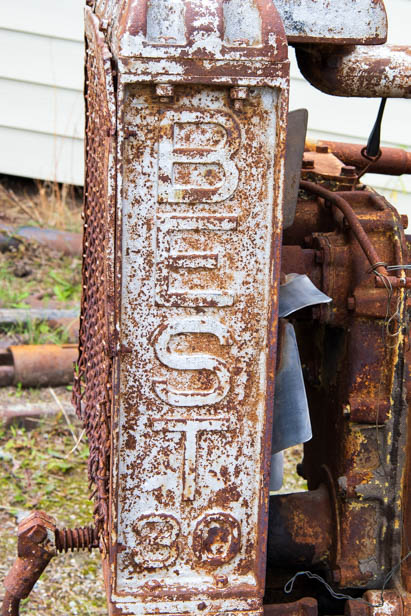
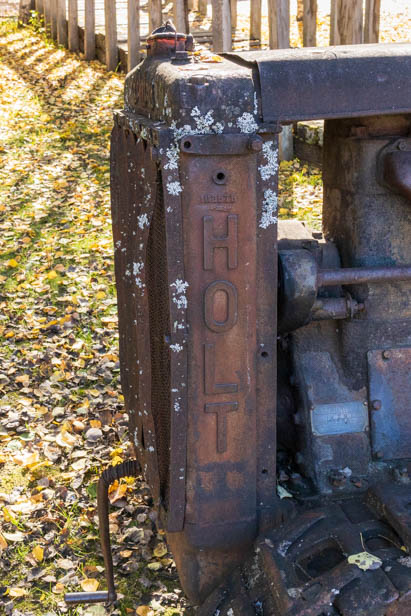
What you are seeing above it the start of Caterpillar Tractor Company. On the left is a BEST Tractor and on the right a HOLT Tractor, both of these companies manufactured a crawler tractors prior to 1925 when the two companies merged to become Caterpillar.
The 1925 Holt Manufacturing Company and C.L. Best Tractor Co. merger may not have happened if it wasn't for WWI and an evolving customer-base focused on infrastructure development as a result of the automobile. During the war, Holt had a contract to sell tractors to the government. This contract allowed Holt to sell a significant number of machines and required a focus on production over innovation. While Holt focused on the war effort, companies like C.L. Best captured the domestic market with new and innovative designs.
Following the war, the two companies needed each other. The war left a surplus of machines, which was depressing the market for new tractors, and both companies needed an extra edge to remain successful. Best had the domestic market, an advanced dealer network and expanded product line while Holt had a worldwide reputation, the "Caterpillar" name and modern manufacturing facilities.
In 1925, the two companies decided to merge to form the Caterpillar Tractor Company. The merger provided the company with funds and technological resources to invest in diesel technology to provide customers with more economical horsepower.
After the merger, the newly formed Caterpillar Tractor Company established a key partner, a dealer network, to support customers around the world. The old saying remains true today — buy the iron, get the company.
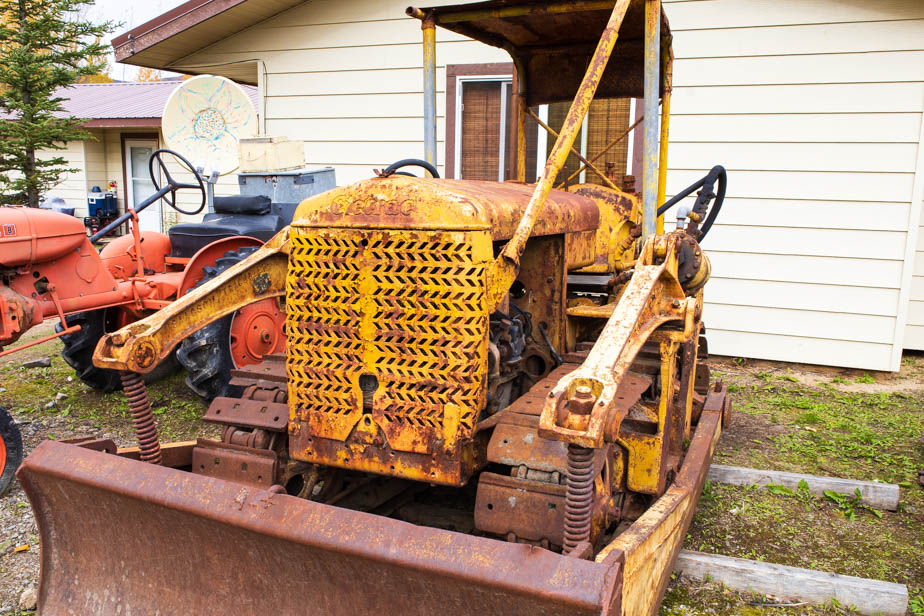
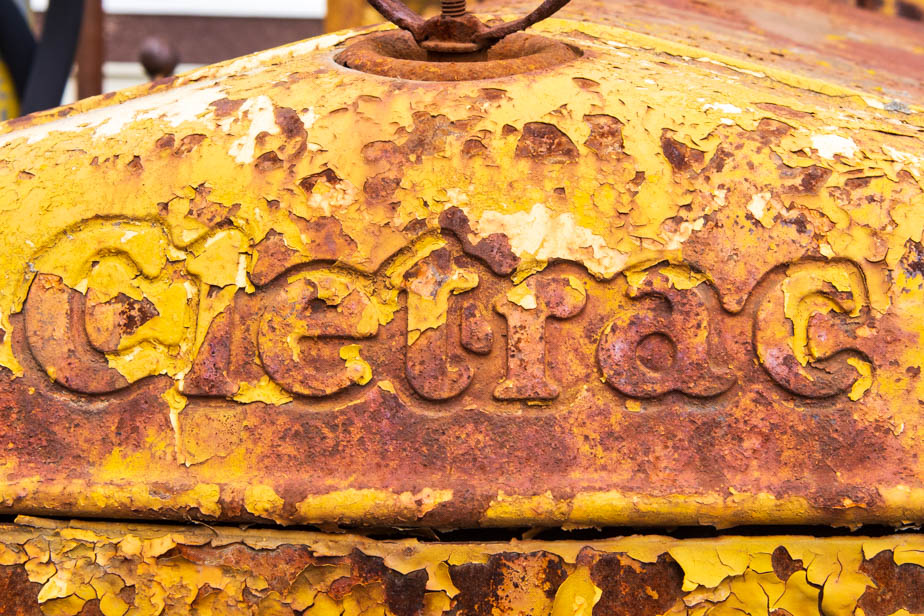
Another Tractor from history - the Cletrac.
The Cleveland Tractor Co known as Cletrac was a competitor to Caterpillar, but as time and market drove the industry the Ole Cletrac as well as International Harvester, Euclid and Allis Chalmers all became items of history. Immediately after WWII my father, NC Ribble Co, represented Cletrac, which was only 3rd or so best of tractors. I told my father that if reincarnation really worked, I wanted to return as "Cat Dealer"!
As a note however remember after WWII the government did not bring all the "IRON" tractors, graders and scrapers home from the battle fields. They learned from their mistake in doing such in WWI. The after War Years of WWII set the stage for a rebounding economy in two ways. The GI Bill produced an educated work force and thousands of new jobs were created, especially from manufacturing. This rebound from the depression carried the economy of US for the next fifty years.
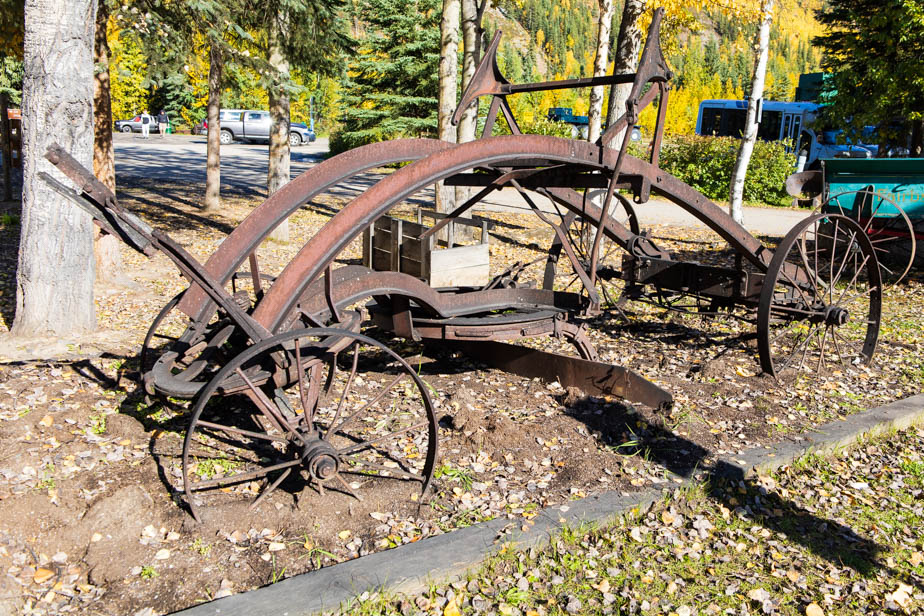
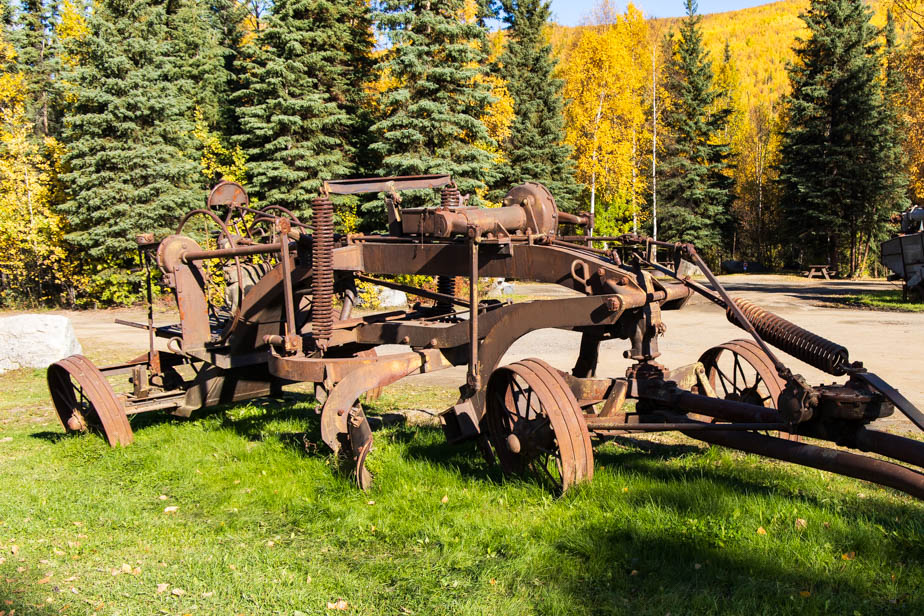
On the left is an old Austin Grader and on the right an Adams Grader. The Austin was a horse drawn grader, and the Adams was pulled by a tractor. This Adams Grader was manufactured in 1943, so it was the primer grader that built the Alaskan Highway as well a air fields across the US and the world. The Grader was also called a Maintainer, as it was the primary tool to regrade gravels roads and keep them smooth. After WWII the Industry added an engine and made the grader self propelled, and today that is called a Motor grader.
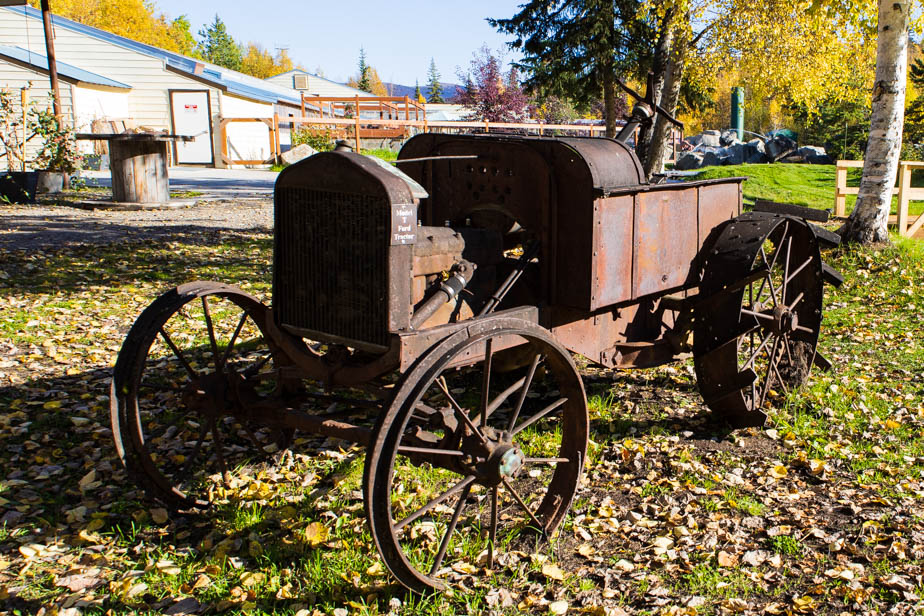

Then we come to Henry Fords' farm tractor. The "T Model Tractor" the photo on the right is the gear drive to the cleated iron rim.
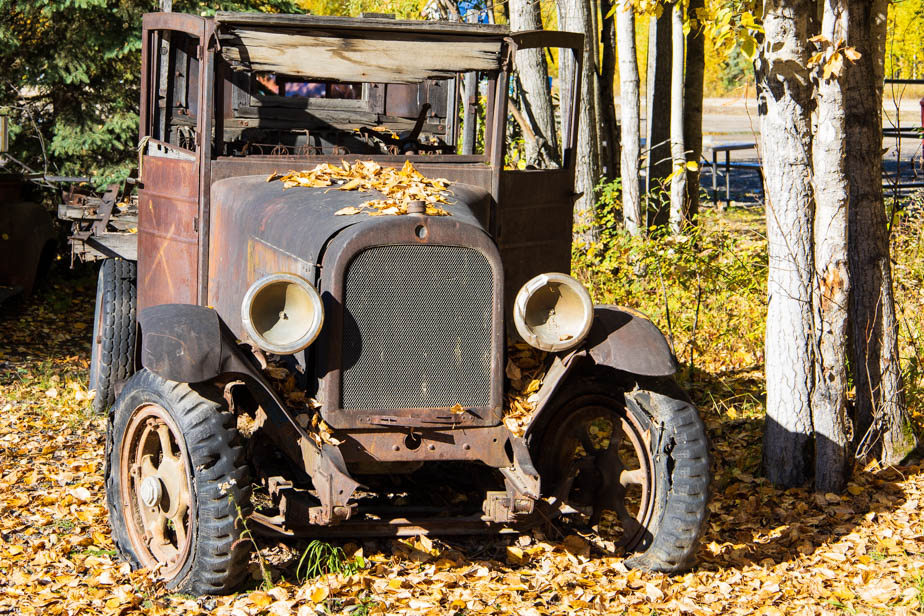
I couldn't read the brand name on this truck, but here is a heck of a deal if you need a truck. This one only has 25,932 miles, and if it hits a nerve with you just call Chena Hot Springs, but be sure to have your transportation arranged for ahead of that call. A little old school teacher was it's only driver. Call now ya here, and of course you'll get a phone all on an extended warranty. The policy is still available.
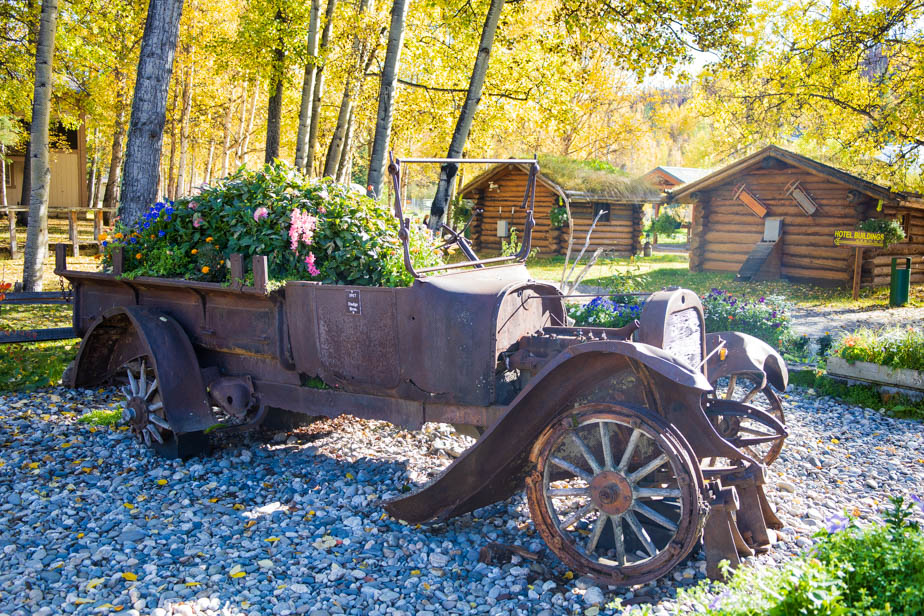
Back to Henry Ford and his "Model T" truck. What a beauty, and it was in this type of truck where I learned to drive. A preacher friend of my Grandfather's stored his T Model Truck at Granddaddy's farm. I was probably 9 or so, and I would sit hours upon end in that ole truck. I drove it till my heart was content, up mountains trails and down into beautiful valleys where the creeks were flowing. Even though my feet could not reach the peddles, and there were three, I must have driven that ole truck a million, heck maybe a zillion miles. I almost cried when the Pastor came and hauled it home. Gosh, I loved that ole " Mpdel T" Truck.
Wow, it seems to have made it all the way to Chena Hot Springs.
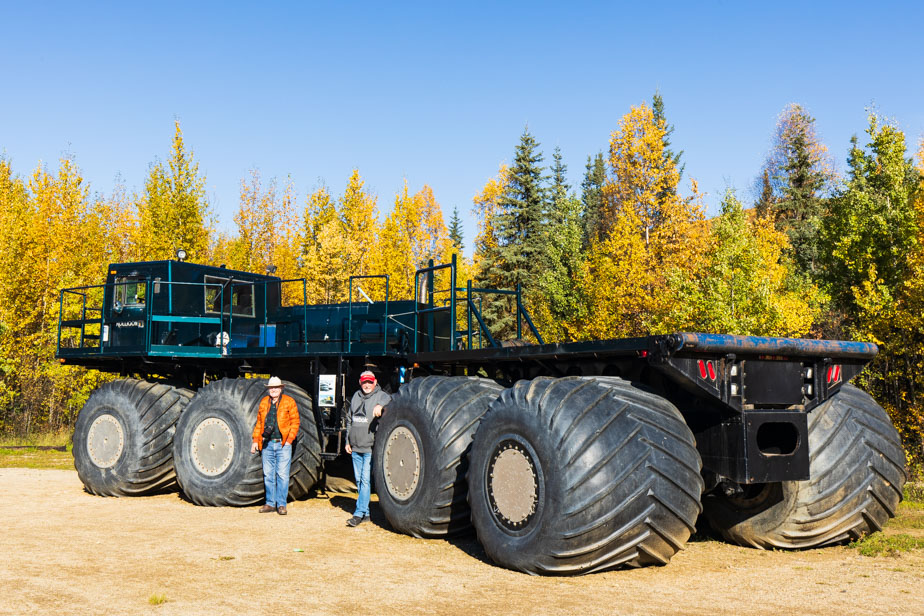
The 'Rolligon" - The Original Go Anywhere Vehicle
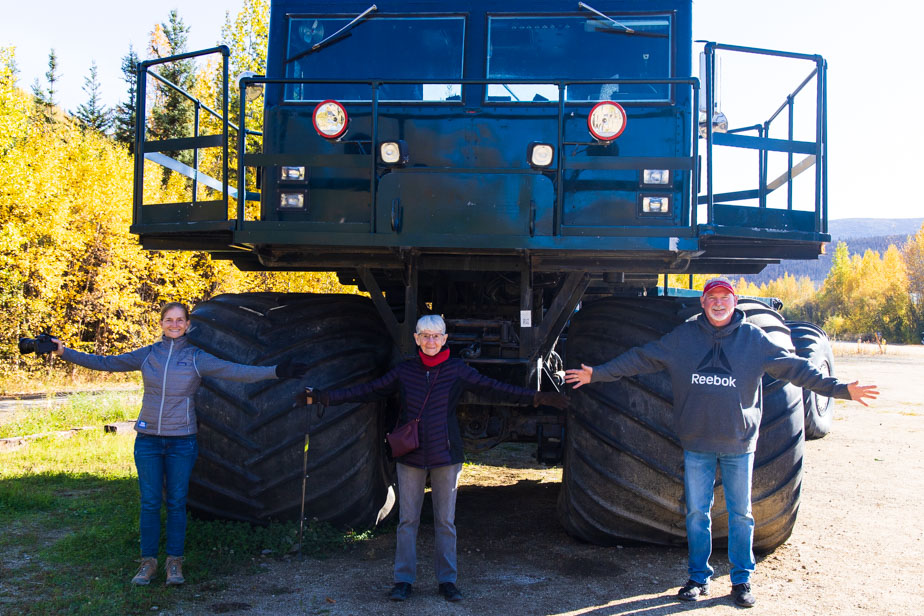


Chena Hot springs has their own Ice Carving Museum. The Kids said that this one was much colder than the museum we visited in Fairbanks. Note they are wearing heavy coats and gloves which the museum loaned them.
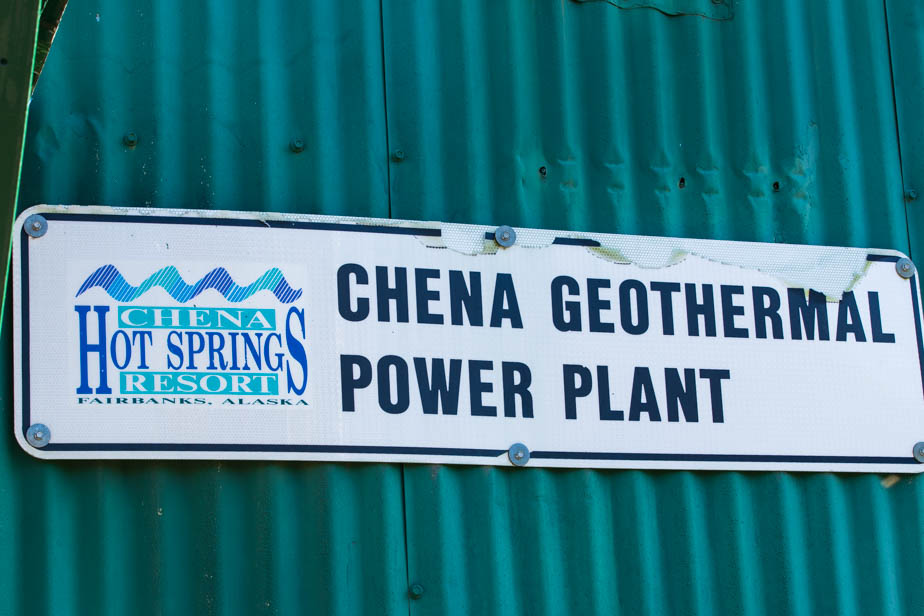
Cheney Hot Springs Resort uses two 200kW Organic Rankine Cycle (ORC) geothermal energy power plants to generate energy, the first in Alaska. The resort moved the diesel generators used in the past to a backup role, since in July 2006. Chena Springs and Eielson Air Force Base have partnered an expansion of the geothermal plant, and the facility is now delivering 100 megawatts of geothermal electrical power to the AF Base. (900 homes)

The geothermal greenhouse where most of the fresh vegetbles served in the dinning room are grown. One must recognize that at this longitude the growing season is only 100 days.


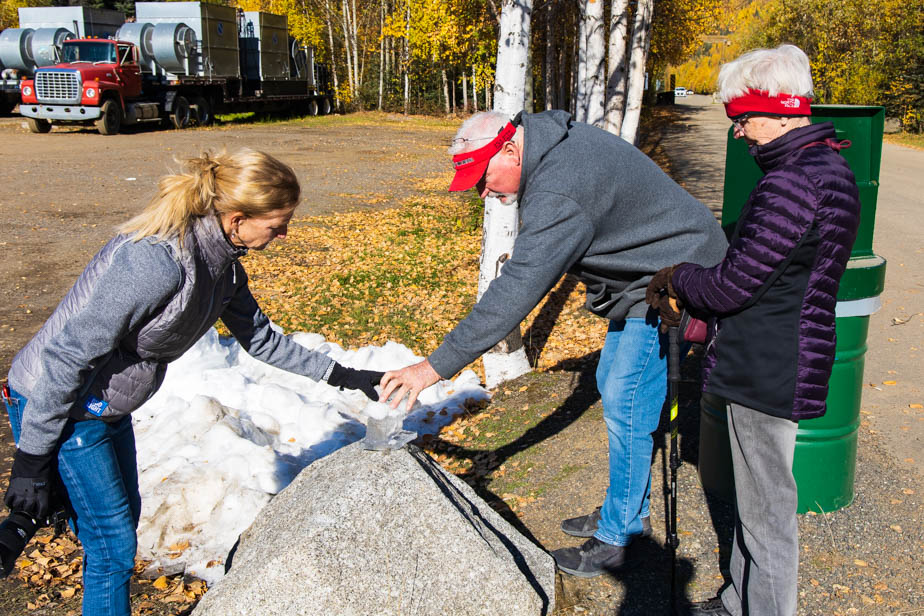
The Kids are messing with the scrapped ice from the ice skating rink. They are certainly artists in their own right.
The Chena Iditarod Dog Team
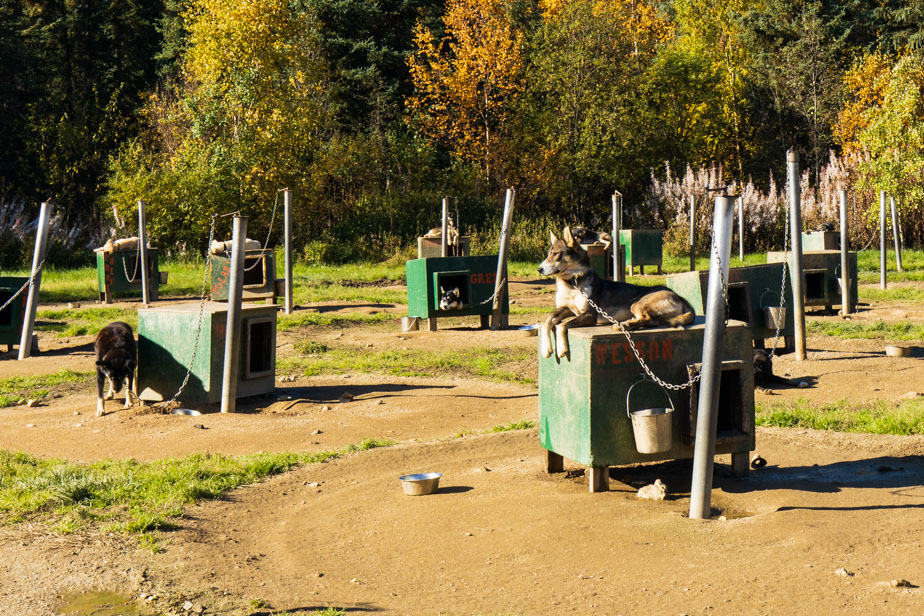
Now to Chena Springs Iditrod Dog Facility. There must have been some 50 dogs in the facility and these are just waiting their turn to run and play.
An Iditarod sled. Part of the racing team practice and the conditioning of the sled dog teams were pulling a sled with wheels. Too, this was available for rides for the guests at the Hot Springs Resort.
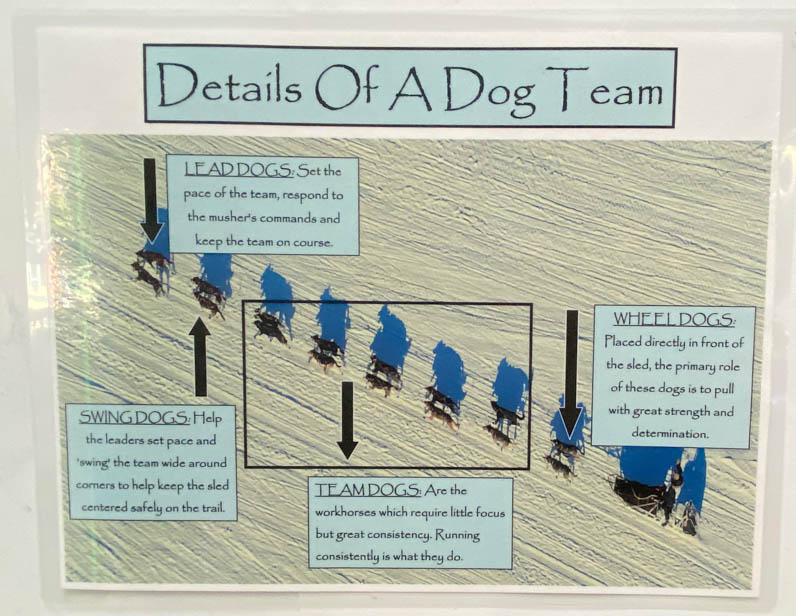
When Dottie and I visited the Iditarod site north of Wallsilla several years ago, I could not believe the size of these racing dogs. Small and very wirey. I guess we were expecting this team to be all Husky's, and here were these dogs the size of our pointers. This description of where a particular dog fits in the team and his responsibility gives one an excellent idea of an Iditarod Team.
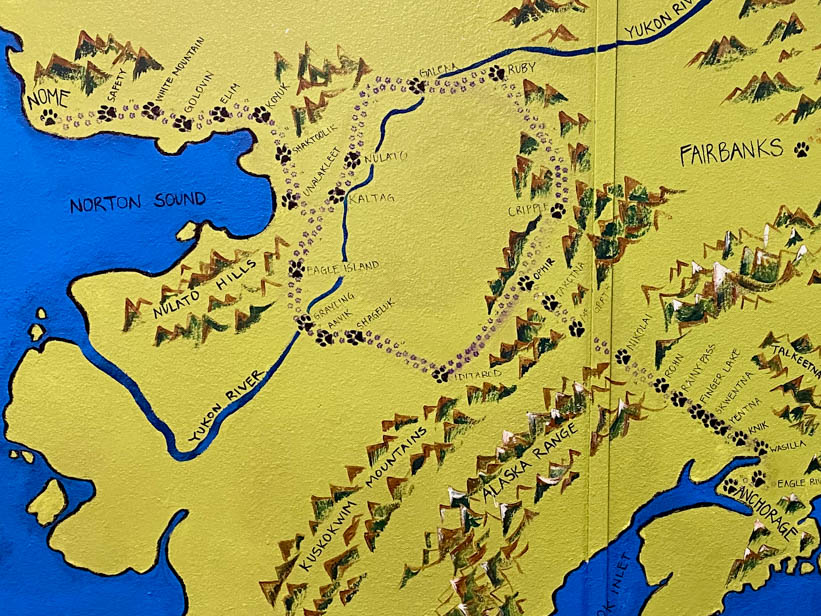
The Iditarod Race has been a fact since the 1900's from Anchorage to Nome, a thousand miles. But for the race this year as shown on the map above, it will be shortened to 860 miles. Just follow the dog tracks.
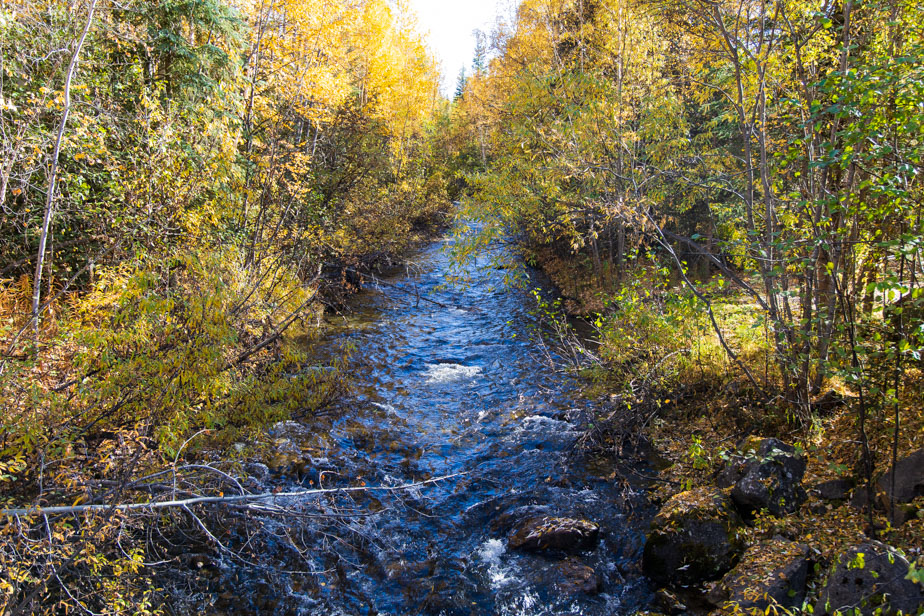
We'll close with the running Chena River on the way to Fairbanks to join the Tenana river and then to the Yukon on its way to the Pacific just south of Nome.
RP 10 sec f4 ISO 1600 16mm
The spectacular beauty of the ever changing Aurora. And the Big Dipper is pointing us to the north. Wow! what a ride and mother nature gave us her best.
We knew that from the forecast of the 'Rp' Index that we has seen the best of the Aurora Borealis for this trip. We decided to venture forth and drive up the Dalton Highway along the Alaskan Pipe Line toward the North Slope, and peek our heads into the Arctic Circle. Keep your wagons hitched and come on along.
Come on Willie sing us another verse as we head for the Arctic Circle.
